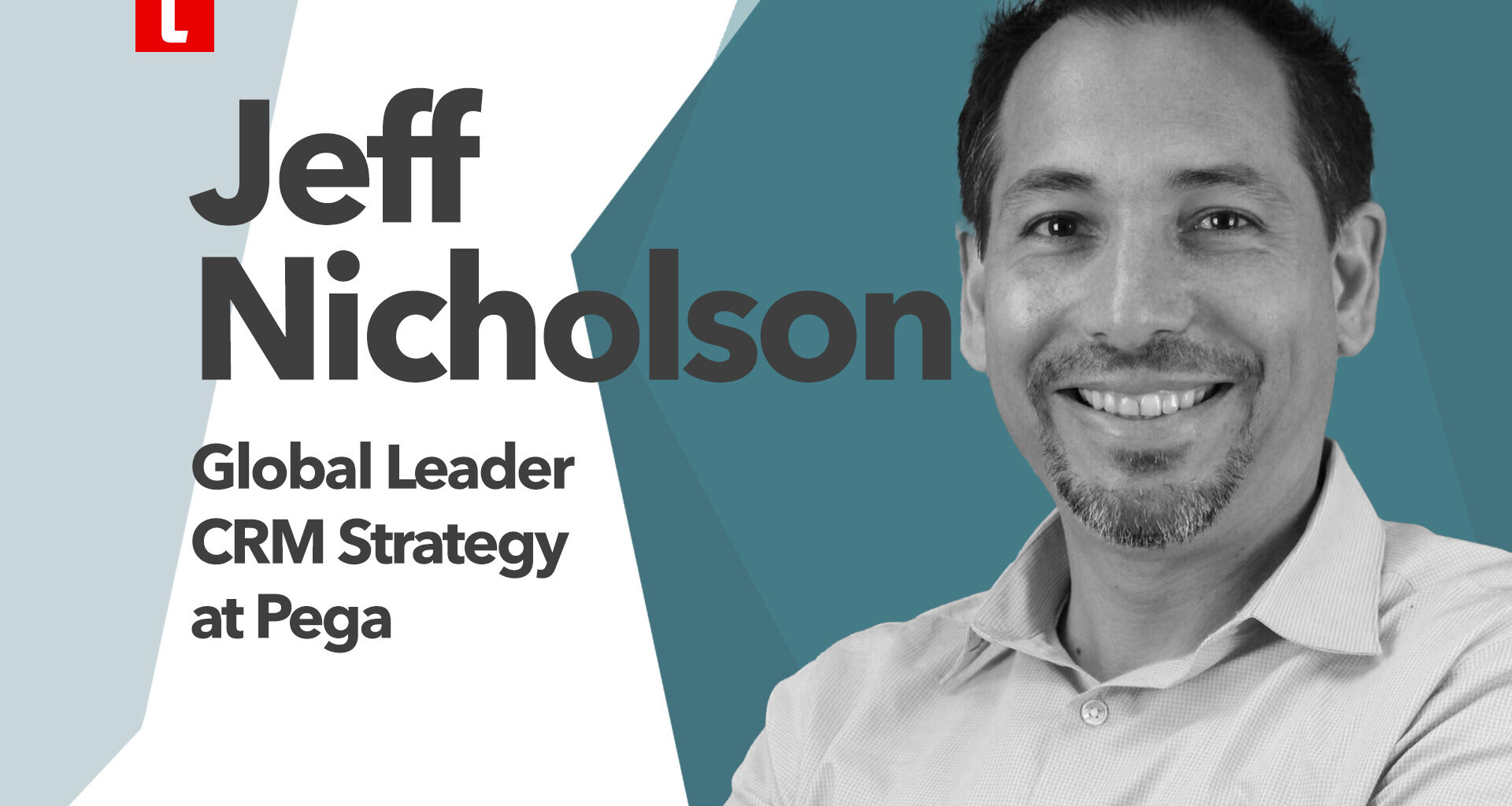We sat down with Jeff Nicholson to discuss some of Pega’s recent findings and to explore the opportunities they offer. In this short discussion on delivering empathy at scale, we touched on a multitude of topics – each one of which could revolutionize a brand’s customer experience success rate. Do give a listen!
Below is the full transcript of the conversation.
Jeff Nicholson
Even though 82 percent of consumers now are willing to use self-service approaches because of the dynamics we mentioned – they were driven there because they couldn’t get through to the call center, etc., nearly half don’t actually expect it to work – 46 percent!
TheCustomer
I saw that! That’s astonishing!
Jeff Nicholson
Well, but do you identify with it?
TheCustomer
I do. I mean my take on that statistic was: one wow, we have really low expectations here, for being able to resolve this successfully. But it’s also a massive opportunity for companies that can exceed that 46 percent bar. There’s a lot of head room in there.
Jeff Nicholson
You nailed it! And that’s what the grand opportunity is and one of the things that we quickly learned by engaging with our clients. And when they go with the approach that we advocate. Which is that resolving customer needs isn’t so much around your desktop and your database, it’s around the journey that they’re on. Can you understand that and serve that up wherever they go? This might not always be to an agent. That’s kind of what you have to solve for now as a customer service professional.
They were able to – when the pandemic hit – take what we think of as “micro-journeys” that they built inside the software. The process for a claim inquiry, for example, an insurance that should be the same no matter where you go. And they were able to extend that out to an intelligent virtual system. So, not a chat bot or a “dumbbot”, but to an actual intelligent version of a system that can understand, you know, that it’s you, Mike, that’s here. You just opened the claim. isn’t this when i focus the conversation there? and can i actually give you that claim status right there rather than having to say ‘sure call our contact center between the hours of 10 and whatever’.
I’m thinking of one insurer that found that was their highest volume inquiry on that intelligent virtual system for claim status, and they were able to resolve 80 percent of those inquiries right there.
TheCustomer
Wow
Jeff Nicholson
And by the way, that’s 24×7 so think of what’s happening with the demand going up. Volumes are going up. You’re having all these messages in, for example, the phone line, in the IVR, that say we have an unusually high call volume. Well, if you have the same message every day it’s not so unusual is it right?
TheCustomer
Right.
Jeff Nicholson
So, what do you do? Do you still push them to these bad experiences? Or do you actually serve up that journey-focused, autonomous capability where they’re already going. And that was what the grand opportunity was. And we’re seeing a major shift toward this.
TheCustomer
So, I’m not going to claim any expertise here, but I’m in the really fortunate position that I get to talk to people who support and develop these great technologies. And a few of them over the past couple of yeara – I’ve gotten to know people who are building and selling customer journey management technology. It’s super interesting to me that in the early years of their in-market exposure they had to explain people why they were there.
Jeff Nicholson
Yes.
TheCustomer
And it didn’t take long – last year two of them I’m thinking of – got acquired. It’s like, really cool technology. It just, boom, got snapped up because, I think light bulbs started going off. And you know, now these things are deeply integrated into the bigger systems.
Jeff Nicholson
Well, exactly. Iit’s funny that you’re calling that because I had the same observation. Really, you got my brain going when you mentioned Robin (Colyer). That same principls that applied there -the customer journey orchestration platforms that emerged were largely coming out of the martech space.
TheCustomer
Yeah.
Jeff Nicholson
Originally, and of course you have Scott Brinker doing great things and covering the space for a long, long time. With the martech landscape now with hundreds and thousands of vendors and categories. But the shift that happened is away from the one-to-many, one-size-fits-all campaign-centric mentality, to now one-to-one.
And doing things like orchestrating journeys for one individual at a time within and across channels – and that was the gap. And the same principle is happening right here, that you and I just discussed in the world of, not necessarily martech, but service tech. Right – where we’re going to reorganize not around our products and what’s convenient for us – but really what what’s in it for you and your journey. It’s the same dynamic.
TheCustomer
And this may take us too deep into the weeds here but you’re Global Lleader for CRM Strategy. And I think of people in your position who – because CRM meant something very different four years ago. It was just, in my view, it was a totally different definition of what CRM was and what it could do, what was there for. And now CRM is the foundation, I think anyway, for so much of what is absolutely core to companies’ customer-facing operations. It’s not just insight and a way to track these people. It’s understanding everything from sentiment and how you apply the right empathy to automating all this stuff. So I’m not even sure where I was going with that other than to say that I think your world has changed. A lot. I’d be really interested to hear what you think about that.
Jeff Nicholson
I couldn’t agree more what you just said. We’ve seen a shift over the over past years in the world of CRM. And when it originally was formed it was billed as, of course, customer relationship management. And I think if you look closely at the systems that were sold they were largely, I think, more customer record management. It was still an “r” but it was all around the database. Can I give you a screen to update data? And can I just help you maintain that customer record. And of course, that doesn’t equal relationship at all.
TheCustomer
Right.
Jeff Nicholson
Which is why you see such high variability as you interact with employees you’re getting such wildly different experiences depending on how well they’re trained, and which touch point they’re going to. And to solve a new problem, a shift began to happen where we went from all these, what we think of the systems of information, right, these desktops and databases to a phrase that you mentioned, which was a world where it was not around just information but insight.
The fundamental difference that I saw is that the insight, when tapping into all this ai that everyone’s talking about, no longer has to come out of each individual employee’s head alone. Wouldn’t it be better if the system could interpret the data for you and serve up the insight into whatever touch point it happened to be? Whether it’s automated completely or autonomous or for an employee to guide them along?
We’ll talk in a little bit about some of the other trends around gig work and so forth and why that’s so important. But if you could only have the insight in the system rather than only in the head, wouldn’t that help you change things? To guide those frontline employees through the interaction – not just around a product again – but around the journey?
TheCustomer
Especially if it can be delivered intelligently based on where the individual is, even emotionally in their, you know, in their place.
Jeff Nicholson
Well, you’re touching on a really interesting subject which is this aspect of empathy. And it’s all understanding their context and probably a topic for in their day. But we understand there’s five different facets of customer context that are playing at any given time. One of those is emotional. One is motivational – what they’re trying to achieve. One is situational – where they are in their journey. And there’s environmental aspects and so forth. But the extent to which you can understand their context in the moment – not your product, but their context – makes a dramatic difference in how well you can rise to that occasion.
TheCustomer
Well, one – thank you for validating my thinking. It’s uh it’s awfully lonely over here sometimes. But on a more serious note, I really enjoy these conversations and I’m honored that Ican talk to people like you. So, the more we can be talking the better for me.
Jeff Nicholson
Well count me in, on or off the record. Always happy to talk, Mike. Loved it.












